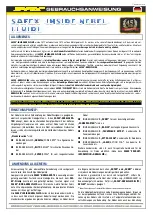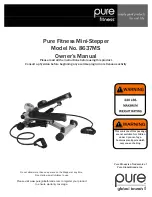
Routers maintain detailed topological information about area(s) of which
they are members, and they maintain summary information about networks
in other areas. Area border routers (1.0.0.1 and 2.0.0.1 in figure 2) exchange
summary information about their own areas with other area border routers.
Network summary information received by an area border router is then
transmitted to routers in its attached area(s). The type of LSA used to send
network summaries is called a summary-links advertisement. Like
router-links advertisements, summary-links advertisements are also sent at
30-minute intervals and are triggered when a link state changes. A
summary-links advertisement includes the following for each link advertised:
IP network number or IP address of the link.
Router ID (set to that of the local area border router).
Subnet mask used on the link.
Metric or cost from the area border router to the destination
network.
Routers exchange LSAs to build and maintain their topological databases.
Topological Database
Routers in each area have identical routing databases. This topological
database describes which routers are connected to which networks.
Attributes of the networks and routers, such as subnet masks, metrics, etc.,
are also maintained in the database. Each router constructs its routing table
from the database. The routing table contains the shortest path to every
network the router can reach. The benefit of maintaining a topological
database is that when a change occurs to the network, new loop-free routes
can be computed quickly using minimal network resources. When a link
outage occurs, for example, each router that detects the change floods LSAs
that describe the change to all other routers in the network. Each router
then modifies its database and recomputes the shortest path to each
remaining network.
RIP, by comparison, maintains just the best route to any given network.
When a change to the network occurs, routers must exchange their entire
routing table with each neighboring router to relearn the best route to every
network.
Routing with OSPF
Routing Improvements
3-76
Summary of Contents for 600 Series
Page 1: ...Hewlett Packard Series 200 400 and 600 Routers HP Routing Services and Applications ...
Page 4: ......
Page 5: ...1 Product Notes ...
Page 6: ...Features of HP Routers Architecture and Technology Branch Office Routing Product Notes 1 2 ...
Page 38: ...Architecture and Technology Software Control Path Architecture 1 34 ...
Page 52: ...Branch Office Routing Future Directions 1 48 ...
Page 53: ...2 Routing Services Notes ...
Page 106: ...Bridging Service Traffic Prioritization 2 54 ...
Page 158: ...Novell IPX Routing Service NetBIOS Protocol Support 2 106 ...
Page 194: ...Data Compression for WAN Links Conclusion 2 142 ...
Page 195: ...3 Application Notes and Case Studies ...
Page 224: ...Improving Network Availability Application Recovery 3 30 ...
Page 234: ...ISDN Wide Area Network Design Dry Creek Joint Elem School District Performance 3 40 ...
Page 316: ......
















































